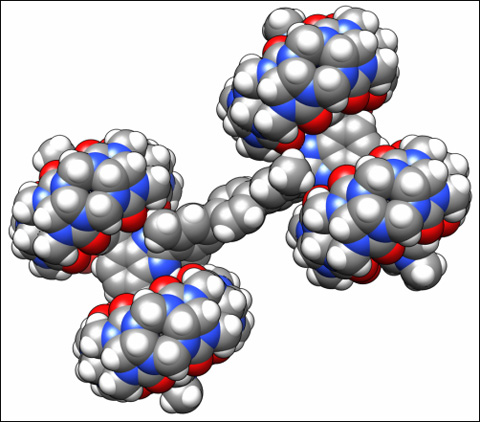By Samantha Peko
NQPI editorial intern
Imagine a phone that turns into a football and then back into a phone. It seems impossible. If scientists can figure out how to manipulate the atomic structure, a lot of unthinkable inventions could become reality, said Saw-Wai Hla, an Ohio University Physics & Astronomy professor and Nanoscale & Quantum Phenomena Institute member. He explained that imagining the impossible is what motivated his decision to participate in the international The Nanocar Race, where teams will race molecular cars.
“The whole competition is not just about building the car…. We are trying to develop a technology to transport at the molecular scale,” Hla said.
The international race will be held in Toulouse, France, in May 2017. Teams have been synthesizing molecules to function like cars for the competition. Ohio University will compete against other teams from the United States, France, Germany, Japan, and Austria. At the race, the molecular cars are driven through a track made of crystalline gold. Each car in the race measures a few nanometers in length, so small it can only be seen using a Scanning Tunneling Microscope (STM).
Hla and Eric Masson, an Ohio University Chemistry & Biochemistry professor and NQPI member, have been building their car since last year. Masson’s team of graduate students is constructing the race car while Hla’s team will drive the car. Masson explained that the nanocar is made of two types of organic molecules: an “H”-shaped frame and four Cucurbituril “wheels.” The name comes from the resemblance of these molecules to pumpkins, which are members of the Cucurbitaceae family of plants.
“There’s no chemical bond between the frame and the wheels, so the frame is really floating into the wheels,” Masson said.
Given their design, the biggest challenge will be ensuring that the frame stays in place, Masson said. He said that a wheel may potentially fall off during the race and the team would have to rebuild the car on the gold surface to continue. “In fact, we would be absolutely delighted if that incident were to happen during the race!” he said, noting that that reconstruction process has never been published.
While Masson’s team is working on the chemical synthesis of the car (i.e. its engineering), Hla’s team is strategizing how to drive a car that does not have a steering wheel. Hla explained that the car will be pushed using an STM’s tip. The tip is a nanosized metal needle that will propel the car. Several test drives are necessary to ensure the car will move according to plan.
Maintaining the temperature of the molecules is also essential. If the molecules get too hot, they will not stop moving. So, the car has to be cooled using helium to -400 degrees Fahrenheit prior to the race.
The event will be filmed live, showing photo images captured at various points in the race via the STM. If Ohio University wins, they will receive worldwide recognition. But for the NQPI members the real prize is proving that science can make almost anything seem possible.



















Comments